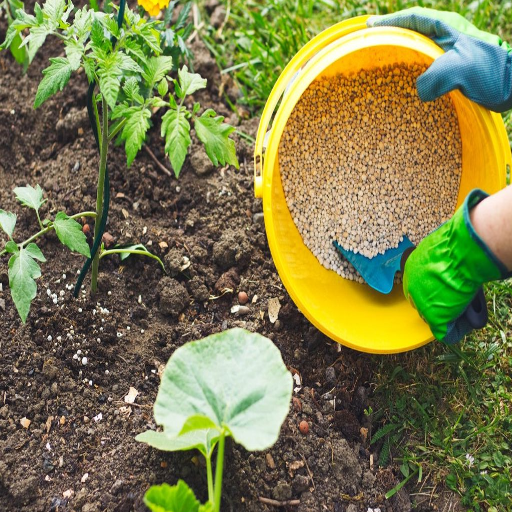Maintaining a thriving home garden requires more than just sunlight and water—choosing the right fertilizer is a crucial factor in optimizing vegetable growth and ensuring a bountiful harvest. Whether you’re a seasoned gardener or just starting out, understanding which fertilizers work best for your vegetables can make all the difference in plant health and productivity. This comprehensive guide will explore the top fertilizers specifically designed for vegetable gardens, breaking down how they work, their essential nutrients, and how to apply them effectively. With our expert insights, you’ll be equipped to select the perfect fertilizer to nourish your plants and achieve the lush, productive garden you’ve always envisioned.
Types of Fertilizers
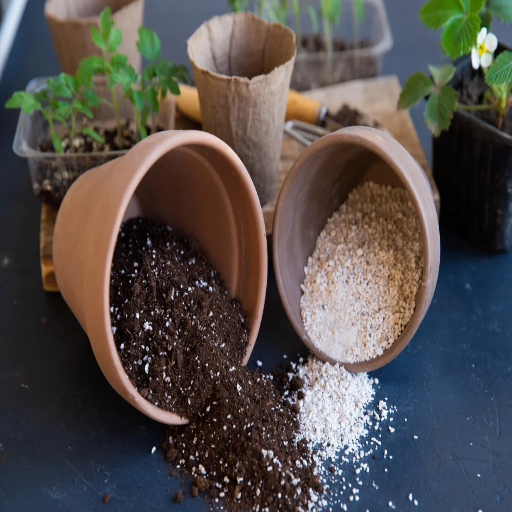
Organic vs. Synthetic Fertilizers
Organic fertilizers improve soil health and slowly release nutrients; synthetic fertilizers provide quick intervention for visible results but may, over time, degrade soils and the environment.
|
Key Point |
Organic |
Synthetic |
|---|---|---|
|
Nutrient Level |
Low, variable |
High, precise |
|
Release Rate |
Slow, steady |
Fast, short-term |
|
Soil Impact |
Enriches, improves |
Depletes, harms |
|
Plant Safety |
Low burn risk |
High burn risk |
|
Environment |
Eco-friendly |
Pollution risk |
|
Cost |
Higher upfront |
Lower upfront |
|
Application |
Complex, uneven |
Easy, uniform |
|
Results Speed |
Gradual |
Immediate |
|
Longevity |
Long-lasting |
Short-lived |
|
Micronutrients |
Present |
Often absent |
This table shows the main differences and considerations to keep in mind when making a choice between organic and synthetic fertilizers.
The Use of Manure in Fertilizing
Manure is an organic fertilizer of good quality that affords the soil with pertinent nutrients, improves its texture, and bestows life upon the microbial ecosystem. The main constituents are animal excreta, perhaps mixed with a bit of bedding, that supply nitrogen (N), phosphorus (P), and potassium (K), the main ingredients for plant growth. The other benefit of manure is that it enhances soil moisture retention, preventing water wastage and allowing further growth of roots.
While using manure, one has to ensure that it is applied properly and treated before use so that various problems, including nutrient imbalances or even pathogen-related contaminations, are averted. Avoid using fresh manure on vegetable gardens because it may contain bacteria such as E. coli. Instead, manure should be composted; the heat generated in this process kills the pathogens and stabilizes the nutrients. Composted manure is therefore best worked in a few months before planting so that nutrient uptake is sufficient.
Farmers and gardeners should take manure according to its nutrient contents and availability. For example, high nitrogen content of poultry manure suits leafy vegetables, where cow manure is low in nitrogen but is regarded highly in soil structure improvement. They must ensure a balanced application because over-fertilizing will cause nutrient leaching into water sources, thus contributing to environmental degradation.
Liquid vs. Granular Fertilizers
Liquid fertilizers work very quickly in absorbing nutrients into the plants, and thus nutrients are evenly distributed in the soil, whereas granules provide the only nutrients needed at a slow rate and ensure long-term benefit to the soil.
|
Key Point |
Liquid |
Granular |
|---|---|---|
|
Release Rate |
Quick |
Slow |
|
Application |
Easy, uniform |
Requires tools |
|
Cost |
Higher |
Lower |
|
Longevity |
Short-term |
Long-term |
|
Absorption |
Immediate |
Gradual |
|
Salt Content |
Lower |
Higher |
|
Nutrient Spread |
Even |
Uneven |
|
Shelf Life |
Short |
Long |
|
Eco Impact |
Minimal |
Potential runoff |
|
Best Use |
Quick boost |
Sustained feeding |
This table brings together important differences and considerations upon making a choice between the two types of fertilizers, i.e., liquid or granular.
Choosing the Best Fertilizer for Your Vegetables
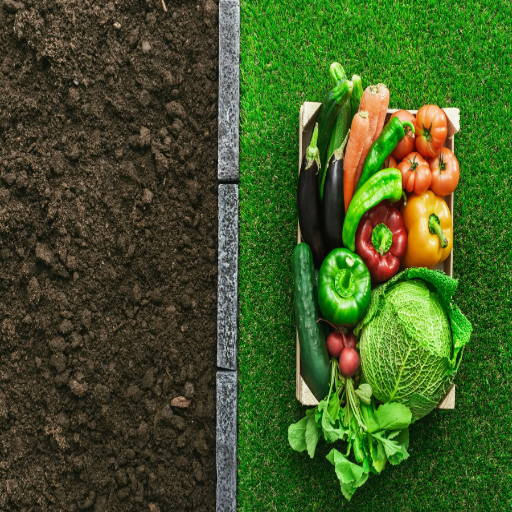
Identifying Nutritional Needs of Your Plants
Knowing the precise nutritional requirements of your plants allows you to maximize growth, yield, and health. Vegetables, like all plants, require three major macronutrients-nitrogen(N), phosphorus(P), and potassium(K)-each performing different functions for their growth. Nitrogen causes leafy growth and is essential to the vegetative stage; phosphorus helps the roots grow and induces flowering; potassium improves general health and the ability of the plant to resist diseases.
Consideration should also be given to secondary nutrients, such as calcium, magnesium, and sulfur, with trace micronutrients also entering the picture in support of major physiological processes, like iron, zinc, and manganese. Deficiencies in any of these nutrients give rise to stunted growth, chlorosis, and poor fruiting.
A soil analysis should be done, including testing for pH, to tell you how well your soil contains nutrients before choosing the fertilizer for your crops. For example, leafy vegetables like spinach usually do best with nitrogenous fertilizers, while fruits such as tomatoes require phosphorus and potassium in equal measures to grow well.
Best Fertilizer Options for Different Vegetables
Different vegetables perform well under different nutrient environments, so one must optimize fertilizer use for their growth and yield of each vegetable. Crops that require nitrogen, such as leafy greens (spinach and lettuce), should grow with fertilizers high in nitrogen content, like urea (46-0-0) or ammonium nitrate (34-0-0), yielding lush green growth. Phosphorus fertilizers such as monoammonium phosphate (11-52-0) are well suited for root crops like carrots and beets, as they directly promote vigorous root growth required for a large-scale harvest.
Fruit vegetables like tomatoes and peppers need a balanced approach and are often fertilized with potassium-rich fertilizers such as potassium sulfate (0-0-50) or custom NPK blends like 10-10-20. Potassium helps strengthen cell walls, imparting good size to fruits and building resistance to diseases. Whereas over-application of phosphorus and potassium must be avoided in the case of leguminous crops, such as beans and peas, because these can fix nitrogen from the atmosphere through a symbiotic relationship with rhizobia bacteria.
Organic types like well-composted manure, bone meal, and fish emulsion are generally slow to supply nutrients, making them ideal for crops that demand slow but steady nutrients over an extended period of time. By combining crop-wise nutrient requirements with periodic soil test data, growers can formulate a more or less precise fertilization schedule aiming at enhanced yield and sustainable agriculture.
Applying Fertilizers Effectively
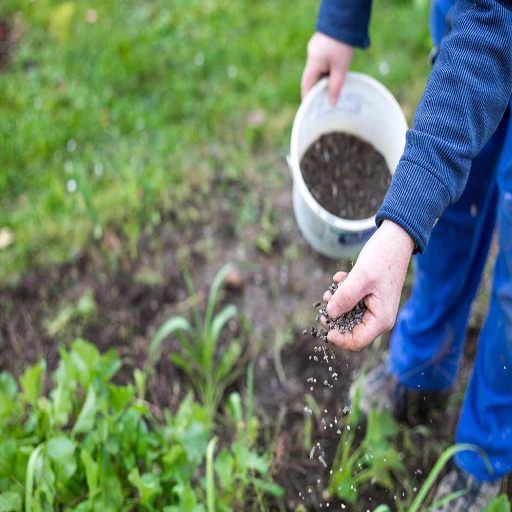
Timing and Frequency of Application
Applying fertilizers at the correct time and frequency is critical to obtaining optimal growth and minimizing nutrient loss. I somehow make sure that fertilizers are applied during all critical growth periods of the crop, i.e., at germination, vegetative growth, flowering, and fruiting. In general, nitrogen is applied early in the crop growth stage to encourage vigorous foliage growth, whereas phosphorus and potassium are applied during the later stages to develop roots, flowers, and fruit. These timings ensure that the nutrients are available when the crops have physiological needs for them.
In making the fertilizing schedule, environmental settings have their place in my considerations. Fertilizer should be applied under stable weather conditions in the absence of heavy rains; otherwise, the nutrients may be leached or run off. Should the schedule take into account good weather, the nutrients would stay within the root zone, hence ramifications for enhanced efficiency. Slow-release fertilizers, depending on the product and the crop requirements, may need only one application, while water-soluble fertilizers often require frequent application of small doses so as not to overload the soil.
Changes in the frequency are based on information from soil tests and plant tissue analysis that monitor nutrient levels throughout the entire growing season. With this information, I am able to make adjustments to nutrient application as necessary, avoiding over-fertilization while maintaining appropriate nutrient levels. This approach of well-timed application based on relevant information creates conditions that promote healthy plant growth while supporting ideally resource-efficient and sustainable farming.
Proper Dosages to Avoid Over-Fertilization
The appropriate application rate is a very important aspect of crop management; too much fertilizer in the field creates nutrient imbalances, environmental contamination, and soil destruction. After carefully testing the soil, proper fertilizer dosages could then be assigned. Variables such as nitrogen, phosphorus, potassium levels, pH levels, and organic matter should be measured to set up an accurate fertilizer requirement baseline.
Moreover, the other method that can lead to precise dosage application is through precision agriculture. Variable rate application enables the targeted fertilizer application based on site-specific factors. This way, the chance of their runoff into adjacent streams beside maximizing nutrient use efficiency (NUE) by plants is minimized.
Many agronomic findings support that beyond a certain threshold, fertilizers show diminishing agronomic returns, calling for strict adherence to recommended agricultural levels. For example, nitrogen should be applied according to crop development and nitrogen requirements in a given season so that residual nitrogen stays as the least possible in the soil after harvest. Slow or controlled-release formulations could be incorporated to reduce excessive and frequent applications, maintaining crop and environmental sustainability.
Proper dosages achieved by the combination of regular soil and plant tissue analyses, variable rate technologies, and advanced application methods ensure higher crop yields and better soil vitality over time. This data-driven approach prevents ecological catastrophes due to overfertilization and promotes sustainable agricultural production.
Techniques for Applying Fertilizers
To optimize fertilizer application, various advanced techniques are being implemented to enhance efficiency and reduce environmental impact. In precise farming, for instance, GPS is applied for variable rate applications to apply fertilizers exactly where they are needed, such that these would be wasted in lesser quantities, if at all, and crops could better absorb them. This method heavily relies on detailed soil mapping and in-field sensors to generate accurate data to achieve site-specific nutrient management.
The other option comprises fertigation, which applies fertilizers via an irrigation system. In this case, fertilizer nutrients are put in solution with water and allowed to disinfect. Hence, if fertilizers for whatever reason cannot be in solution, then they are best used. Fertigation is generally beneficial for regions where water is a scarce resource, as it cleverly combines two essential inputs: water and nutrients.
There is, however, another option as a solution to the problem: controlled-release fertilizers (CRFs) that release nutrients at a relatively steady rate over a prolonged period until nutrient demand coincides with crop demand, and mainly coatings that react to temperature and moisture. CRFs greatly minimize the possibility of leaching and runoff, assisting the environment.
Thus, applying these techniques, besides improving crop productivity, addresses some vexing problems facing modern agriculture, especially resource efficiency and ecological conservation. Technology, data analysis, and sustainable practices combine to ensure that the fertilizer application remains both effective and responsible.
Common Mistakes to Avoid
Over-Fertilization and Its Consequences
Fertilizer needs to be carefully calibrated, so a wrong application may have short-term and long-term bad effects. High and harmful nutrient concentration in the soil prevents normal plant growth and reduce yield. Excess of any nutrient is bound to interfere with the micronutrient uptake by plants. For example, excess phosphorus inhibits the uptake of micronutrients like zinc and iron, resulting in deficiencies and an imbalanced plant nutrition.
Over-fertilization can also be viewed from an environmental side, as it has very serious ecological implications, mainly eutrophication. These compounds, held usually as nitrogen and phosphorus, are released into neighboring water bodies, thus triggering fast growth of algae that deplete dissolved oxygen and disturb the aquatic ecosystem. The contrary global implication is the formation of hypoxic zones or dead zones where aquatic life finds it hard to survive.
Also, overly applied fertilizer ingredients normally seep into the groundwater to increase nitrate levels that threaten human health, especially in communities that depend largely on well water. Technique adoption includes precise applications and regular soil testing to enable appropriateness between nutrient applications and crop requirements, thereby mitigating the risks while safeguarding agricultural outputs and the environment.
Ignoring Plant-Specific Needs
Disregarding the specific requirements of individual plant species will constitute a major blunder, leading to agricultural inefficiency and environmental degradation in the long term. These include things like optimal soil pH, moisture level, nutrient requirements, and exposure to sunlight that go into the growing conditions of each plant species. In cases where these requirements are not considered, crops may suffer nutrient stress, yield less, and be hit by pests or diseases.
Nitrogen-heavy fertilizers, for example, come in handy for quick-growing cereal crops but are, in fact, very harmful to legumes that prefer nitrogen-fixing environments. Similarly, watering a crop that needs fewer amounts of water can cause root rot and erosion of vital soil nutrients. According to recent research, plant-specific practices can improve efficiency by up to 25%, emphasizing the absolute importance of coming to terms with each plant’s nutrient cycle and growth pattern.
To achieve the above-mentioned goal, precision agriculture systems offer many useful technologies like remote sensing, soil mapping, and crop modeling, to name just a few. Through the utilization of these technologies in combination with routine monitoring, farmers are able to make well-informed, data-driven decisions to offer the best care to every plant species. Besides making it possible to achieve better production levels, integrating these operations also helps in resource conservation and ecosystem protection.
Inadequate Soil Preparation
In general, soil preparation constitutes a basic concept for success in agriculture. Unfortunately, poor soil preparation has still remained a common flaw in farming systems. Among the problem areas one has to address in soil preparation-compaction, poor aeration, and water infiltration-all significantly decrease the nutrient-supplying capacity of the soil to support plant growth. Compacted or poorly tilled soils, along with unevenness in soil surface, do not allow crop roots to access necessary nutrients and moisture for their growth, causing plants to be stunted and yields to be variable. Moreover, if organic matter or fertilizers are not incorporated during soil preparation, the plant is left without the needed nutrients to grow, thus worsening cultivation problems.
Another threat that improper soil preparation poses to agriculture is that it induces greater susceptibility to pest and disease invasions. Compacted soils provide a perfect medium for the propagation of harmful pathogens and potential pests since they limit root penetration and drainage. For example, poorly formed soils might exacerbate problems of a waterlogged nature, creating an anaerobic condition that is conducive to root rot and other fungal infections. This will certainly interfere with the present crop, but the injurious effect on soil health will carry over to the next. Improper top-soil management also accelerates the erosion process that removes the most fertile layers of soil from the land via wind or water movement, thus reducing the land’s agricultural potential.
Modern precision agriculture approaches and tools should be applied to resolve these problems. Soil mapping and remote sensing technologies will be utilized to pinpoint areas that require focused intervention so that farmers can better execute practices such as deep tillage, contour plowing, and incorporation of soil conditioners. Conservation tillage techniques can be used to improve soil structure with the least possible energy inputs. Simultaneously, these advanced analytical tools should be integrated for monitoring soil health and nutrient status so that remedial measures can be implemented at short notice. Addressing the very causes of improper soil preparation will enable farmers to overcome its ill effects, ensuring sustainable yield and improved soil fertility for a longer time.
DIY Fertilizer Options
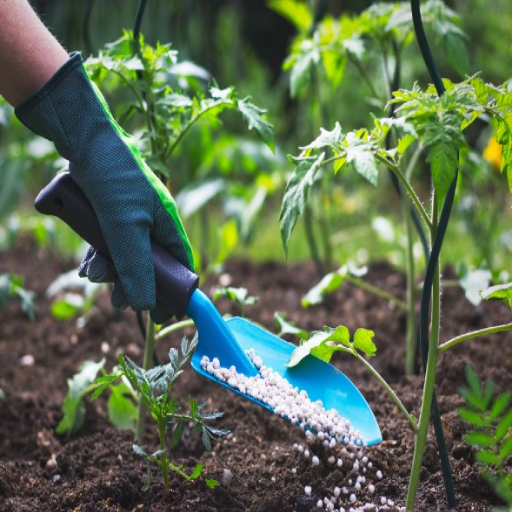
Creating Your Organic Fertilizer
Thus, to make your organic fertilizer, you have to understand what goes into it. Organic fertilizers are made mostly from natural sources such as compost, animal manure, or plant remains. These materials supply key nutrients like nitrogen (N), phosphorus (P), and potassium (K), necessary for plant growth and soil enrichment. They also provide some micronutrients, including calcium, magnesium, and sulfur, to aid plant health and promote vigorous growth, as well as boosting the microbial activity in the soil.
A vital accessory to organic fertilizer preparation is decomposition, where organic matter is fed to microorganisms to be converted into nutrient-rich compounds. A balanced C/N ratio in compost is ideally maintained at 30:1 for proper decomposition and to avoid bad smells. Using locally available materials for the compost reduces waste and ensures that the process is cost-effective. For example, vegetable scraps may serve as nitrogen sources, while dried leaves or straw may work to supply carbon.
Adding biochar or bone meal to the mix will fine-tune soil structure and mineral availability. Turn the compost pile often to aerate it and hasten bacterial decomposition. If we know what the soil is lacking, we can formulate organic fertilizer to fill the gaps, keeping our agriculture environmentally friendly and productive.
Utilizing Kitchen Scraps as Fertilizer
Kitchen scraps constitute an invaluable nutrient source for making beneficial organic fertilizer. Food waste with vegetable peels, fruit cores, eggshells, and coffee grounds contains nitrogen, phosphorus, and potassium, improving soil fertility. All these biodegradable materials form a valuable alternative to chemical fertilizers, along with an environmentally friendly way of composting.
Whenever kitchen scraps are put to good use in composting, materials should be finely chopped to increase the surface area exposed to microbes that act on the matter during its decomposition. These scraps may be mixed with carbon-rich materials like dried leaves or shredded paper in an approximate ratio, so there is a balance between nitrogen and carbon, or at least staining odors are absent from the steaming pile. Managing moisture levels between 40% 60% supports microbial activity in breaking the waste down into good compost.
The experiment showed that compost containing kitchen scraps presented nutrient values competitive to those of commercial fertilizer,s with asserted improvement to soil texture and water holding capacity. Checking pH and good curing avoids phytotoxicity and ensures the absence of pathogens, so such compost produces a safe and effective amendment of soils in diverse agricultural or horticultural applications. It is also a good method for reducing landfill upon food waste; secondly, it also furthers the cause of sustainable agriculture by closing nutrient cycles.
Benefits of Homemade Fertilizers
- Cost-Effectiveness: Homemade fertilizers effectively lower agricultural expenses and gardening costs by using the available organic wastes, like kitchen wastes, garden wastes, and animal manure. Studies suggest that a good number of farmers and gardeners may save almost 30% of their expenses by recycling organic materials.
- Improved Soil Health: These organic homemade fertilizers improve soil structure by providing aeration, water retention, and availability of nutrients. Recent research in soil science showed that soils with organic matter addition can hold 25% more water than soils with only inorganic fertilizers.
- Pollution Reduction: These fertilizers pollute the environment less because they recycle wastes that could have ended up in landfills or places contributing to runoff pollution. Using wastes as ingredients for making fertilizer reduces their methane emissions and prevents them from leaching through synthetic chemicals into water supplies.
- Nutrient-Rich Composition: Quite often, homemade fertilizers have a balanced free supply of nitrogen, phosphorus, and potassium essential for plant growth. Compost-based fertilizers have an NPK ratio that depends on various organic inputs, but on average, nitrogen is about 1.5% while phosphorus accounts for about 1% in a good compost.
- Encouraging Microbial Activity: Organic homemade fertilizers aid microbial growth, which is an essential function in nutrient cycling in soils. According to researchers, levels of microbial activity in soils treated with organic compost were three times higher than those treated with non-organic treatments, culminating in higher yields and resilience of crops.
The benefits mentioned above prove that making fertilizers at home is a sustainable, cheap, and efficient alternative to synthetic ones in both agriculture and horticulture.
References
Frequently Asked Questions (FAQ)
Q: What is the best vegetable fertilizer for home vegetable gardens?
A: The best vegetable fertilizer for home vegetable gardens often includes a complete fertilizer formulation that contains balanced amounts of nitrogen, phosphorus, and potassium. Many gardeners recommend using a 10-10-10 fertilizer to provide essential nutrients for optimal vegetable growing.
Q: How do I know how much fertilizer to use in my garden?
A: To determine the right amount of fertilizer in your garden, a soil test will tell you the existing nutrient levels and what your plants need. Based on the results, you can adjust the amount of nitrogen and other nutrients accordingly.
Q: Can I use chicken manure as a fertilizer for my vegetable garden?
A: Yes, many gardeners use chicken manure in the garden as it is a rich source of nutrients. However, it should be well-composted to ensure it’s safe to use and to avoid manure contamination.
Q: What are the benefits of using a soil amendment like cottonseed meal?
A: Cottonseed meal is beneficial as it provides a slow-release source of nitrogen and other plant nutrients. Incorporating it into the soil before planting can enhance soil fertility and improve plant growth.
Q: How do I choose a fertilizer that contains the right amount of phosphorus and potassium?
A: Look for fertilizers available that list the three numbers on the label, which represent the nitrogen, phosphorus, and potassium content. For vegetable growing, a balanced fertilizer or one higher in phosphorus is often preferred to promote healthy root development.
Q: What do plants need from fertilizers?
A: Plants need essential nutrients such as nitrogen, phosphorus, and potassium in sufficient quantities to thrive. Complete fertilizers provide a balanced mix of these nutrients, ensuring that plants benefit from comprehensive nutrition.
Q: Are lawn fertilizers safe to use in vegetable gardens?
A: Lawn fertilizers are generally not recommended for vegetable gardens because they may contain chemicals that can be harmful to edible plants. It’s best to use fertilizers specifically formulated for vegetable growing to ensure safety and effectiveness.
Q: Can I use llama manure in my vegetable garden?
A: Yes, llama manure can be used in vegetable gardens as it is considered a safe and effective fertilizer. It is rich in nutrients and can be incorporated into the soil to enhance fertility.
Q: How can I ensure my plants benefit from fertilizer?
A: To ensure your plants benefit from fertilizer, it is important to apply it at the right times and in the right amounts. Following the recommendations based on soil tests and the specific needs of your plants will help maximize nutrient uptake and growth.



